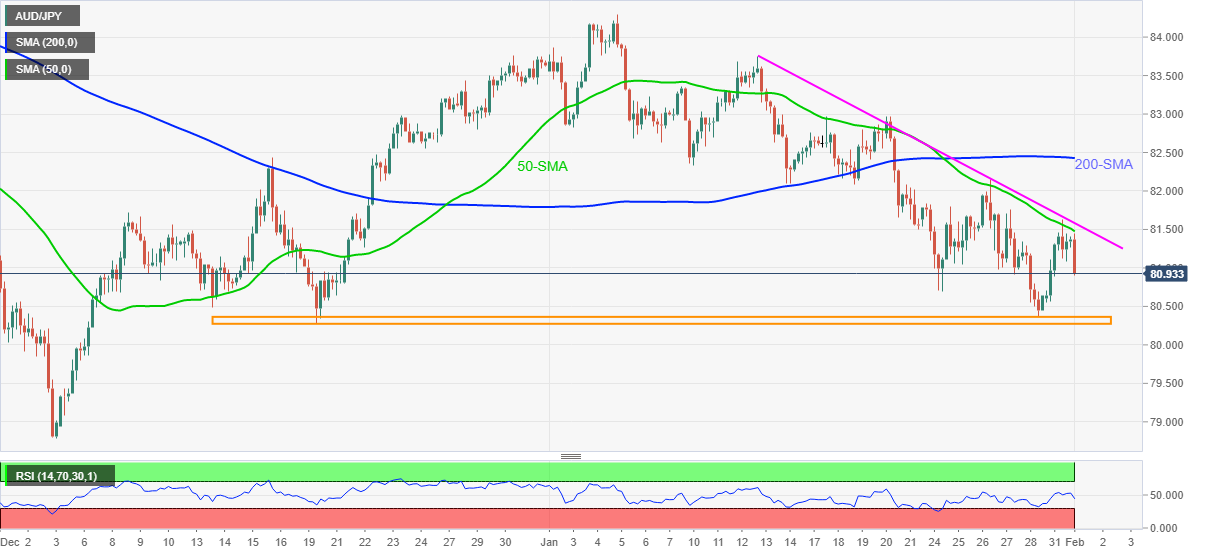AUD/JPY Price Analysis: Drops towards six-week-long support above 80.00 on RBA
- AUD/JPY drops around 50-pips on RBA rate decision.
- RBA officially ends QE but rejects concerns over immediate rate hike.
- Pullback from 50-SMA, 13-day-old resistance line joins RSI retreat to keep sellers hopeful.
AUD/JPY nosedives to 80.90, down 0.55% intraday, following the Reserve Bank of Australia’s (RBA) cautious optimism during early Tuesday.
The RBA matched wide market expectations of announcing no change to the benchmark interest rate of 0.10% while announcing an end to the A$350 billion bond-buying program. However, the AUD/JPY bulls got disappointed by comments like, “Ceasing purchases under the bond purchase program does not imply a near-term increase in interest rates.”
Read: Breaking: RBA ends QE and holds rates at 0.1%, AUD/USD falls 50 pips on knee-jerk
In doing so, the cross-currency pair extends pullback from the 50-SMA and a descending resistance line from January 13.
The RSI retreat also backs the latest declines, which in turn direct AUD/JPY prices towards a horizontal area from December 20, 2021, near 80.30-35.
It should be noted, however, that the quote’s weakness past 80.25 will be challenged by the 80.00 threshold and December 2020 low surrounding 79.00.
Alternatively, recovery moves will have to cross the stated resistance line, near 81.58, to direct AUD/JPY buyers towards the 200-SMA level around 82.40. During the rise, the 82.00 round figure may offer an intermediate halt.
AUD/JPY: Four-hour chart

Trend: Further weakness expected
